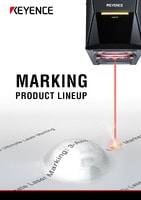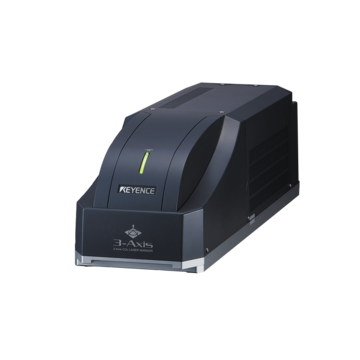Industrial Laser Marking Systems / Laser Markers
Laser Pill, Tablet & Capsule Marking
-
Tags:
- Medical , Food and Pharmaceutical , Laser Labeling
In the United States, the Federal Drug Administration (FDA) requires that almost every solid oral dosage drug—pills, tablets, and capsules—has an identification mark. This identification mark is called the “imprint code.”
The imprint code identifies the drug’s active ingredient and dosage, and it may be a symbol, logo, number, or letter. An imprint code protects consumers, manufacturers, and pharmacists from counterfeits and accidental misdosing. To put an imprint code onto a drug, manufacturers use pharmaceutical ink printing or laser marking.
However, marking pills, tablets, and capsules doesn’t come without challenges. These tiny, sensitive, and cylindrical drugs require precision and focus—two characteristics that laser marking in the medical industry is known for.
In this blog, we’ll discuss the fluidity of laser marking tablets, pills, and capsules and their benefits compared to ink printing. By the end, you’ll be ready to choose your new laser marking machine.
Laser Marking Tablets & Pills vs. Ink Printing
Laser marking and ink printing are both permanent, edible, and overall effective methods for adding an imprint code. However, there are vastly different processes along the way.
Laser Marking Process
The laser marking process uses a CO₂, green, or UV laser marking machine with an irradiated laser beam to make an imprinted mark.
First, the laser marking machine generates light from a diode or diode pack. The light then goes through an oscillator that can either amplify the light, assign its wavelength, or both. Mirrors, often referred to as galvos, steer the light to trace the designs or marks, and the lens, or lensing system, focuses the beam onto the pill, tablet, or capsule.
Depending on the wavelength of the laser light, the mark can be the result of heat or photolytic degradation processing, also referred to as cold marking. Therefore, it can mark the drug's surface without affecting the substrate. As soon as the pill or tablet is marked, the process is complete.
Ink Printing Process
Before ink printing adds the imprint code, the drugs may have to be prepped. For instance, gelatin capsules require drying and degreasing before printing. The drying and degreasing help the ink stick to the capsule. Once that pre-treatment is completed, the printing process starts.
There are two popular types of ink printing: droplets and ink stamping.
If a printer uses the droplets method, that means that the printer shoots out droplets onto the drug to form a design or image. Once the droplets create the design, a UV light shines overhead to set it in place—a process known as curing.
If a printer uses the stamping method, then it will use an engraved stencil and ink pad to stamp a design. The engraved stencil will imprint the ink pad, transferring ink onto the stencil, which is then used to stamp the inked stencil onto the drug.
We’re here to provide you with more details.
Reach out today!

Benefits of Laser Marking Tablets, Pills & Capsules vs Ink Printing
Now that you know the difference between laser marking and ink printing, let’s discuss the benefits laser marking has compared to ink printing. Laser marking doesn’t require extra treatment, has ease of management, and doesn’t use consumables.
Easy Marking Management
Using a laser marking machine for capsules, pills, and tablets does not require manual management beyond the initial setup. Instead, the machine controls the beam, focal point, and speed without adjustments. There are no physical parts to be made.
The ease of managing laser marking tablets, pills, and capsules is completely different from ink printing. A major criticism of ink printing is ink management. Ink management includes consistently monitoring viscosity, density, and surface tension to prevent defects. Any change in pressure, temperature, or vibration can impact how the ink prints and make it susceptible to clogging, leaking, or spurting. Ink printing also requires refilling ink, manufacturing stencils, and frequent adjustment.
Zero Consumables
Laser marking tablets, pills, and capsules do not use consumables. The lack of consumables relieves extra costs and is more environmentally friendly. This is unlike printing, which requires ink, ribbon, and stencils.
Discover more about this product.
Click here to book your demo.

Types of Lasers Used for Laser Pill Marking
There are three types of laser marking systems used for laser pill marking: UV, CO₂, and green. These lasers are gentle enough that they do not mark past the surface and into the substrate.
UV Laser
A UV laser is a laser marking machine that uses ultraviolet light with a 355 nm wavelength. The UV laser marking process is called “cold marking” because the shorter wavelength allows for higher absorption and can mark materials through photolytic degradation processing instead of relying on the thermal effect. The beam is also ⅓ the length of a standard wavelength, which generates a smaller beam spot for clearer marking on tiny pills.
CO₂ Laser
CO₂ lasers use a 10600 nm wavelength created by processed CO₂ and generated plasma. CO₂ lasers do a fantastic job of creating a slight change in depth (either negative or positive depending on preference) in order to clearly show the desired markings without any contrast creation. This will generally be the quickest marking style for pills and tablets that react well with the CO₂ laser's wavelength.
Green Laser
Green laser marking is done with light that has a wavelength of 532 nm. This puts it between the UV laser and CO₂ laser marker. It is much more gentle than CO₂, with less heat reliance and far more precision. However, the wavelength is not as short as the UV laser, so it has the potential to generate a bit more heat effect.
We’re here to provide you with more details.
Reach out today!

Choose the Right Laser Marking Machine for Capsules, Tablets & Pills
When choosing the right laser marking machine, there are two main considerations to keep in mind: drug compatibility and adjustable focal point.
Drug Compatibility
Each laser marking machine has a solid oral dosage drug that it is most compatible with. CO₂ laser marking is compatible with soft gelatin tablets without TiO2 additives. UV laser marking is compatible with solid tablets, soft gelatin capsules, and hard gelatin capsules—even with TiO2 additives. Green laser marking is compatible with clear marking plastic capsules.
Adjustable Focal Distance
The focal distance is the ideal distance between the laser and the target. Laser machines built for flat parts usually have a fixed focal distance since the target is on one plane.
However, capsules, tablets, and pills are spherical or cylindrical, so they are not on one plane. Therefore, the mark will be distorted if the focal distance is fixed or static. Choosing a laser with an adjustable focal distance ensures that the beam follows the curves of the pill, tablet, or capsule.
An adjustable focal distance also combats tray misalignment. The small weight and size of pills, capsules, and tablets mean that their positioning frequently shifts. Choosing a laser marking machine with an auto-adjusting focal point ensures that even if a pill, tablet, or capsule has shifted up or down in the tray, the laser will adjust its focus and be able to mark correctly.
Curious about our pricing?
Click here to find out more.

Your Auto-Adjusting Focal Point Laser
Laser marking tablets, pills, and capsules is an efficient, environmentally friendly, and safe method for preventing counterfeits and staying in line with FDA regulations. If you’re seeking a laser that produces clear and distortionless marks with an adjusting focal distance, consider KEYENCE’s 3-Axis lasers.
KEYENCE offers 3-Axis control with our UV and CO₂ lasers. 3-Axis control moves your focal point across three axes, which ensures distortion-free marks on your cylindrical and spherical drugs. These lasers were designed for improved efficiency, ease of use, and to eliminate consumables.
Have more questions? Contact us at KEYENCE today to discuss how a laser marking machine can save you time and money.
We’re here to provide you with more details.
Reach out today!





